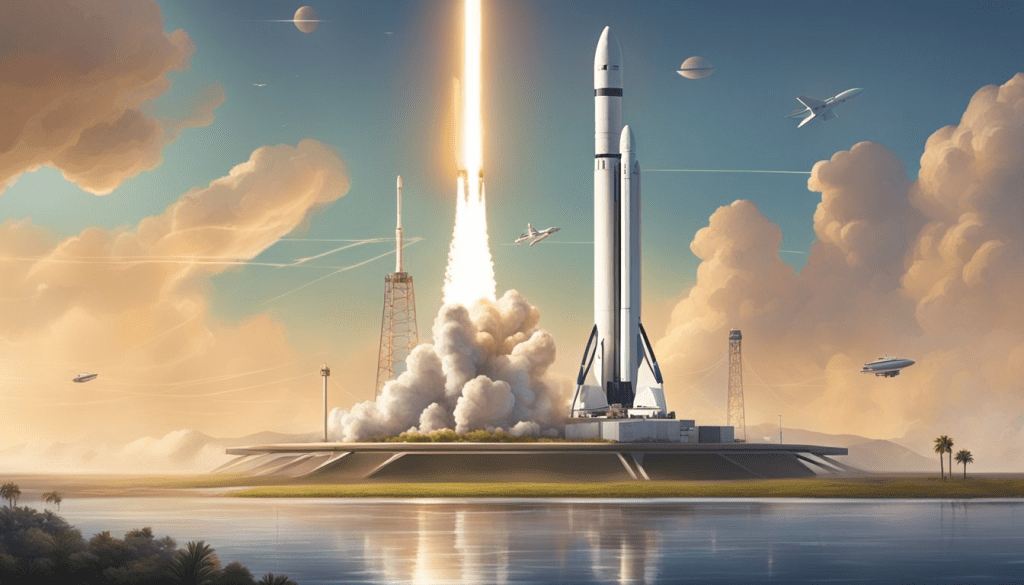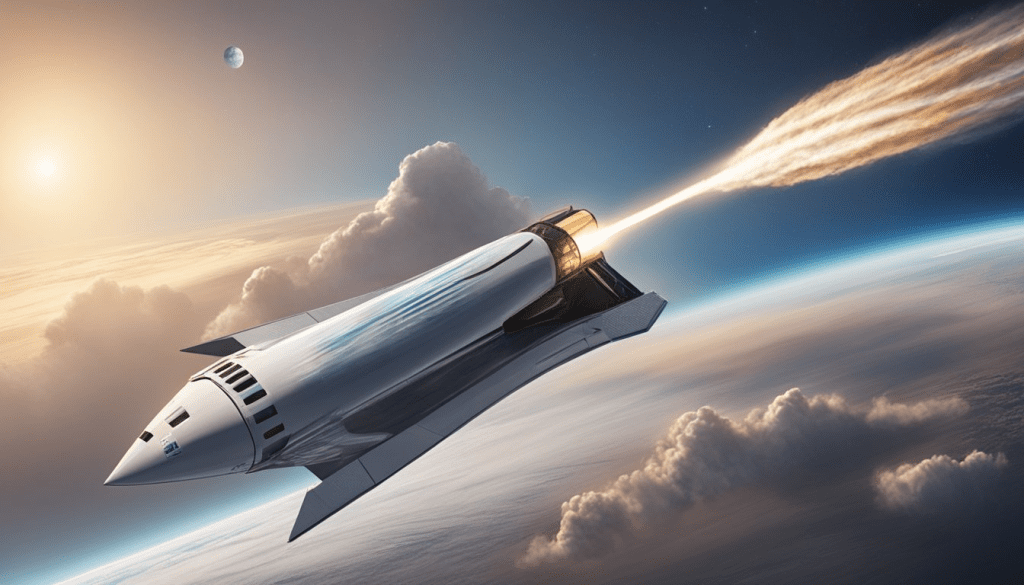Elon Musk, the visionary behind SpaceX, has a plan to revolutionize travel on Earth using the same technology he’s developing for journeys to Mars. His ambitious project, Starship, is not just for reaching space. Musk claims this powerful rocket could cut travel time between major cities to under an hour, with a London to New York trip clocking in at just 30 minutes. As SpaceX explores the boundaries of space and speed, let’s take a closer look at Musk’s bold plans for intercontinental travel and how Starship could completely transform the way we travel.
The Starship Rocket: A Glimpse into the Future of Travel

SpaceX’s Starship rocket, the world’s most powerful and reusable spacecraft, is designed to carry up to 1,000 passengers in a single trip. Originally developed to transport humans to Mars, Musk now sees Starship’s potential to shrink our planet, making faraway cities reachable in minutes.
Capable of reaching speeds up to 27,000 km/h (nearly 17,000 mph), Starship would make conventional air travel seem slow in comparison. For reference, the fastest commercial airliners today reach speeds of just over 1,000 km/h (621 mph). The sheer difference in speed would allow Starship to carry passengers from any major city to another in under an hour, a feat that would not only save time but also redefine what’s possible for business and leisure travel alike.
How It Works: The Mechanics of Starship’s Earth-to-Earth Travel
Unlike conventional flights from airport runways, Starship’s Earth-to-Earth travel system would involve specialized launch and landing procedures. Passengers would board a boat that transports them to a launch pad positioned offshore, where the rocket would be stationed on a floating platform. This distance from urban areas minimizes the noise and disruption associated with rocket launches.
After boarding, Starship would launch vertically, quickly reaching suborbital heights at incredible speeds. The journey would end with a controlled descent back onto a similar platform near the destination city. The entire journey—boarding, launch, flight, and landing—could take less than 30 minutes for the fastest routes.
Mind-Boggling Speeds: Comparing Starship to Commercial Flights
To appreciate just how fast Starship really is, here’s a look at some projected flight times compared to standard commercial flights. Currently, a flight from London to New York takes about seven hours. With Starship, that trip could be reduced to an astonishing 29 minutes. Here’s a look at other routes Musk envisions:
- New York to Paris – 30 minutes
- Sydney to Singapore – 31 minutes
- Tokyo to Delhi – 30 minutes
- London to Hong Kong – 34 minutes
- New York to Sydney – 49 minutes
These projected times reveal how revolutionary Starship’s speed would be, making it possible to cross continents in less time than most people spend commuting to work.
Safety and Passenger Experience: What to Expect on a Rocket Ride
Of course, traveling at Mach 25 (25 times the speed of sound) is far different from a leisurely plane ride. Musk has described the experience as similar to Disney’s Space Mountain roller coaster, with passengers likely strapped in to withstand the g-forces associated with such high speeds. Unlike commercial planes, there would be no bathrooms, food services, or even the ability to move around due to the rapid, high-intensity nature of the flight.
This approach to travel will be starkly different from what we’re used to. In a 2019 tweet, Musk noted that Starship would operate like an “ICBM traveling at Mach 25,” without amenities like pilot areas or food galleys. Passengers would be seated in a coach-style layout for the brief journey, with seat restraints ensuring safety. While there won’t be much comfort or luxury, the unprecedented travel speed might make up for it, especially for those needing to reach distant destinations quickly.
Environmental and Regulatory Challenges: Can SpaceX Overcome the Hurdles?

For Starship’s Earth-to-Earth travel plans to become a reality, there are significant regulatory and environmental challenges that SpaceX must address. Operating rockets for intercontinental travel raises questions around noise pollution, emissions, and safety protocols that are still under review by aviation authorities like the Federal Aviation Administration (FAA). Ensuring safe, efficient, and sustainable operations could take years of development and compliance work.
There’s also the question of environmental impact. Rocket launches produce considerable CO₂ emissions, raising concerns about the viability of rockets as a sustainable mode of travel on a large scale. SpaceX has been working on making Starship reusable, which would lower its environmental footprint, but there is still much work to be done in terms of minimizing emissions.
Public Reaction and Social Media Buzz: Excitement, Curiosity, and Skepticism
As with many of Musk’s ambitious projects, the internet has had mixed reactions. On one hand, excitement around the idea of super-speed travel is palpable, especially among business travelers and tech enthusiasts who envision a world where time zones are no longer barriers. Musk fueled this excitement by replying to a tweet that suggested Starship could be cleared by the FAA during Donald Trump’s presidency, confirming, “This is now possible.”
On the other hand, skepticism remains. Many have pointed out the practical challenges, from safety concerns to regulatory red tape. Others question whether people would be willing to endure roller-coaster-like speeds and a lack of basic amenities just to save a few hours. Nonetheless, the buzz around Starship reveals a collective fascination with the idea of breaking traditional travel limits.
Starship’s Potential Impact on Business, Leisure, and Global Connectivity

If Musk’s vision becomes reality, Starship could have profound effects on global travel. Imagine a world where traveling from Tokyo to New York or Sydney to London is a quick, routine trip. Business meetings, cultural exchanges, and family visits that once took days could become routine morning trips. This new level of connectivity could transform industries and open up new possibilities for global collaboration.
Additionally, Starship’s speed could attract a new breed of adventure-seekers interested in experiencing suborbital flights. It could also reshape the airline industry, as traditional carriers would need to rethink their strategies to remain competitive in a world where an hour-long intercontinental journey is feasible.
Conclusion: Musk’s Bold Vision Could Redefine the Future of Travel
Elon Musk’s vision of high-speed, intercontinental travel with SpaceX’s Starship might sound far-fetched, but it’s grounded in serious science and ambition. With the potential to make international travel faster than ever imagined, Musk is pushing the boundaries of what’s possible, transforming Starship from a Mars-bound rocket to a planet-shrinking machine capable of linking cities across continents in minutes.
While there are challenges and practical considerations to address, from environmental impact to passenger safety, the concept is more than just a dream. If SpaceX can navigate the technical, regulatory, and logistical hurdles, Earth-to-Earth travel on Starship could bring about a new era of connectivity and speed, making the world feel smaller than ever before.


